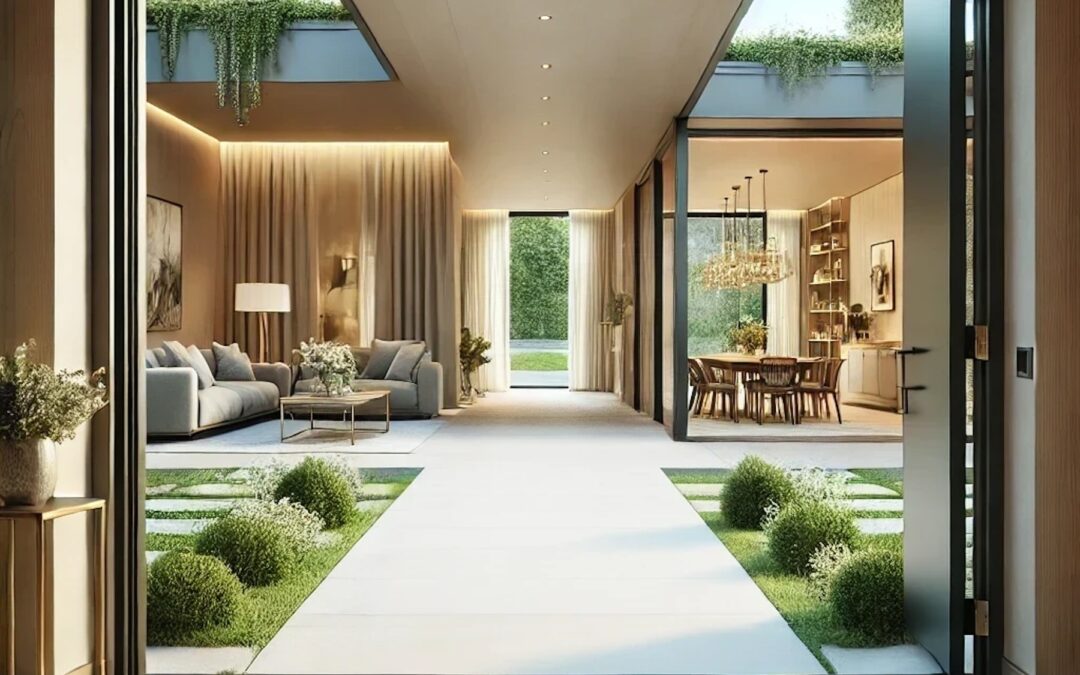In the world of luxury home building, inclusivity has become an essential aspect of design. As society evolves, so does the understanding of creating spaces that cater to everyone’s needs, regardless of their physical abilities. Inclusive design in luxury homes ensures that elegance and accessibility coexist, offering homeowners a living experience that is both sophisticated and accommodating. This article delves into the principles and practices of designing inclusive luxury homes, highlighting key features and benefits that make these spaces truly exceptional.
The Importance of Inclusive Design in Luxury Homes
Inclusive design is about creating environments that are usable by all people, to the greatest extent possible, without the need for adaptation or specialized design. In luxury home building, this means integrating features that enhance accessibility while maintaining the aesthetic appeal and high standards associated with luxury living. Inclusive design is not just about meeting the needs of people with disabilities; it is about ensuring that everyone, regardless of age or ability, can enjoy and use their home comfortably and safely.
Key Features of Inclusive Luxury Homes
- Wide Doorways and Hallways
- One of the fundamental aspects of inclusive design is ensuring that doorways and hallways are wide enough to accommodate wheelchairs and other mobility aids. Standard doorways are typically 32 inches wide, but for an inclusive home, a width of 36 inches or more is recommended. This not only makes the home accessible for wheelchair users but also provides ease of movement for everyone, including those carrying heavy items or moving furniture.
- Zero-Step Entries
- A zero-step entry eliminates the barriers posed by stairs at the entrances of homes. This feature is particularly beneficial for those with mobility impairments, the elderly, and families with young children. By designing entrances that are level with the ground, inclusive luxury homes offer a seamless transition from the outside to the inside, enhancing safety and convenience.
- Accessible Bathrooms
- Bathrooms in inclusive luxury homes are designed with features such as roll-in showers, grab bars, and adjustable-height showerheads. Sinks and countertops are often designed to be accessible from a seated position, and toilets are positioned at a height that is comfortable for all users. These elements ensure that the bathroom is not only functional but also safe and easy to use.
- Adaptable Kitchens
- The kitchen is often the heart of the home, and an inclusive design ensures that it is accessible to everyone. Features such as lower countertops, pull-out shelves, and side-opening ovens make the kitchen more user-friendly. Additionally, installing lever-style handles on faucets and cabinets can make them easier to operate for individuals with limited hand strength or dexterity.
- Elevators and Stair Lifts
- In multi-story luxury homes, installing an elevator or stair lift can significantly enhance accessibility. These features provide a safe and convenient way for individuals with mobility issues to navigate between floors, ensuring that the entire home is accessible to all occupants.
- Smart Home Technology
- Integrating smart home technology can greatly enhance the functionality and accessibility of a luxury home. Voice-activated systems can control lighting, climate, security, and entertainment, making it easier for individuals with physical limitations to manage their home environment. Automated doors, window coverings, and appliances further enhance convenience and independence.
Benefits of Inclusive Design in Luxury Homes
- Enhanced Safety and Comfort
- By incorporating inclusive design features, luxury homes become safer and more comfortable for all occupants. Features such as grab bars, non-slip flooring, and adequate lighting reduce the risk of accidents, while wider doorways and zero-step entries facilitate easy movement throughout the home.
- Increased Market Appeal
- Homes designed with inclusivity in mind appeal to a broader market, including aging homeowners who wish to age in place and families with diverse needs. This increased market appeal can enhance the home’s resale value and attract a wider range of potential buyers.
- Future-Proofing
- Inclusive design features ensure that a home remains functional and comfortable as the needs of its occupants change over time. This future-proofing aspect makes inclusive luxury homes a smart investment, as they can adapt to the evolving needs of their residents without requiring costly modifications.
- Social Responsibility
- Embracing inclusive design in luxury home building reflects a commitment to social responsibility and equality. By creating spaces that are accessible to all, builders and homeowners contribute to a more inclusive society where everyone can enjoy the benefits of high-quality living environments.
Conclusion
Inclusive design in luxury homes represents the perfect blend of accessibility and elegance. By incorporating features that enhance usability for all individuals, these homes provide a living experience that is both sophisticated and accommodating. As the demand for inclusive design continues to grow, luxury home builders have the opportunity to lead the way in creating homes that are not only beautiful but also welcoming to everyone. Embracing this approach ensures that luxury homes remain relevant, functional, and desirable for years to come.






